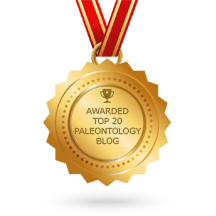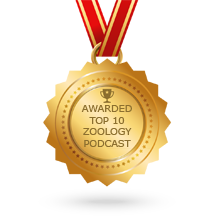Browsing the "Cenozoic" Category
The Cenozoic era, meaning “new life”, is a division of earth’s history spanning from around 66 million years ago to the present. It is subdivided into the Paleogene, Neogene and Quaternary periods. The beginning of the Cenozoic is characterised by a phase of recovery following the end Cretaceous mass extinction, and during which mammals and birds began to diversify.

Published on September 15th, 2019 | by Liz Martin-Silverstone
Terror birds, or phorusrhacids as they are known scientifically, are a group of large, flightless birds that lived during the Cenozoic, and truly lived up to their name. Known for their large, powerful skulls, and enormous [&hellip... Read More →

Published on April 15th, 2019 | by Liz Martin-Silverstone
Undoubtedly, Megalodon is the world’s most famous extinct shark is and in this episode, we hear everything we know about this taxon, its ecology and how it got to be so big. Its ultimate extinction is [&hellip... Read More →

Published on January 1st, 2019 | by David Marshall
Decapods are a group of crustaceans that include such well-known families as crabs, lobsters and shrimp. Whilst crustaceans are known from as early as the Cambrian, we don’t see the first decapods until Devonian. Over the [&hellip... Read More →

Published on June 30th, 2017 | by Liz Martin-Silverstone
When thinking of palaeontology in Asia, most people think of Mongolia and China, but there is actually a significant palaeontology community in Japan. Japan has many fossils, starting in the Ordovician, and ranging from everything from [&hellip... Read More →

Published on June 15th, 2017 | by David Marshall
The proboscideans are a group of animals that contains the elephant and mastodont families. Many of us will be well-aware of these groups, but what of some of the lesser-known proboscideans? One such family are the [&hellip... Read More →

Published on August 1st, 2016 | by Laura Soul
The Bighorn Basin in Wyoming has been an important area for research into terrestrial ecosystems for decades. The basin formed as part of the uprising of the Rocky Mountains in the west of North America, and [&hellip... Read More →

Published on June 2nd, 2016 | by Caitlin Colleary
The Southeastern Association of Vertebrate Paleontology (SeAVP) conference took place on May 16 at the Virginia Museum of Natural History (VMNH) in Martinsville, VA. The conference included students and faculty from nearly a dozen institutions from [&hellip... Read More →

Published on April 13th, 2016 | by Liz Martin-Silverstone
Echolocation is an amazing ability that some mammals have evolved. Using sonar frequencies, dolphins and other toothed whales can communicate with each other and hunt prey, making the unique amongst marine mammals at being able to [&hellip... Read More →

Published on January 15th, 2016 | by Liz Martin-Silverstone
One of the most difficult aspects of palaeontology is understanding how extinct animals moved around. It’s one thing to find a fossil and reconstruct it’s morphology, but it’s completely another to put that morphology into action [&hellip... Read More →

Published on November 9th, 2015 | by Liz Martin-Silverstone
Crocodylomorphs today are not thought to be the most diverse group, consisting of all semi-aquatic forms of alligators, crocodiles, and gharials. However, the fossil record shows us that this group has a very long and diverse evolutionary [&hellip... Read More →























